Why Are Vehicles Still so Heavy? Blame Manufacturing Infrastructure
Car manufacturers have achieved significant fuel economy gains in recent years, but the improvements largely come down to upgraded drivetrain efficiency. Vehicles still weigh substantially more today than they did in the early 1980s, when the previous decade’s demand for fuel economy improvements forced the issue.
Since then, automobiles have gradually packed on the pounds — negatively offsetting the technology encouraging fuel frugality. Modern safety concerns, improved build quality, sound dampening, and consumer demand for bigness have all helped to keep the typical family transport oinking around a two-ton curb weight.
If companies could effectively slim down those autos, without sacrificing structural rigidity, safety, or consumer comfort, the efficiency gains would become all the more significant. However, with few consumers ready to dive back into noisy, frail hatchbacks, weight savings will likely need to be done on the molecular level. In a new study, the Center for Automotive Research (CAR) in Ann Arbor investigated the materials going into 44 separate 2015 model year cars and asked automakers what would they use if they suddenly needed to reduce weight from essential items.
The Cadillac CT6's Achilles Heel: Collision Repair
Owning a range-topping Cadillac is supposed to be a trouble-free affair, and — barring gremlins — it still can be, so long as your sharp-edged, oddly light CT6 remains unbent and unbroken.
Cadillac’s liberal use of high-strength aluminum in the sedan’s body structure won accolades when the CT6 debuted for the 2016 model year. Body stiffness, curb weight, and fuel economy all benefit from this mingling of metals. However, trouble arises when those carefully bonded metals come apart.
As it turns out, fixing a damaged CT6 could prove difficult for many of the model’s 7,876-plus owners.
Rollin' in My 4.8: Ford's Coyote Engine Replacement Gains Dual Injection, Report Claims
Prepare to kiss a famous displacement goodbye.
Ford’s 5.0-liter “Coyote” V8 has dutifully powered variants of the automaker’s Mustang and F-150 since 2011, instilling the brand’s pony car with the kind of heritage that can only be squeezed from 302 cubic inches.
Well, time (and technology) marches on, and Ford’s lower-shelf V8 is due for a replacement. According to a recent report, the Blue Oval folks aren’t choosing sides when it comes to the best way to squirt gas into the new mill.
That Fleet of Robot Pacificas is Ready to Roll, Possibly On a Street Near You
Google’s recently rebranded autonomous vehicle project, Waymo, and Fiat Chyrlser Automobiles have been working together on developing self-driving minivans since the summer. Half a year in, the two companies have announced the production of 100 Chrysler Pacifica Hybrids with complete self-driving capabilities.
As you read this, the modified vans are being outfitted with Google-designed sensors and software, almost ready for the road.
Take This Powertrain and Use It, Toyota Hopes to Tell Other Automakers
It hasn’t given the plan a green light just yet, but Toyota is seriously considering letting other automakers tap into its engine, transmission and hybrid technology.
The automaker’s powertrain division chief has opened up on his desire to give rivals everything they need to offer customers a cutting-edge, fuel-efficient vehicle. Why should R&D departments muss their hair when they could just buy off-the-shelf gear from Toyota?
Sergio, are you listening?
Self-Driving Uber Car Filmed Running a Red; California Shuts Down Pilot Program
Uber proudly released a fleet of eleven driverless Volvos onto the streets of San Francisco Wednesday morning and one or two immediately started running amok. One person tweeted about seeing a self-driving vehicle nearly hitting another car, while another posted a video showing an autonomous tech-equipped XC90 breezing through a red light and active pedestrian cross-walk.
Before the end of the program’s first day, people were clamoring for Uber to explain the incidents and the California Department of Motor Vehicles had sent the ride-hailing company a cease and desist letter for operating without a permit.
U.S. Department of Transportation Proposes Mandatory 'Talking Car' Technology to Prevent Crashes
The United States Department of Transportation has proposed a rule that would require vehicle-to-vehicle communication technology in all new cars.
Vehicle-to-vehicle systems allow cars to communicate information to each other that could be used to update drivers about potential accidents, possibly reducing the number of crashes on U.S. roadways. The basic technology uses short-range radios to send and receive vehicle data on location, speed, direction, and braking status. While extremely useful in the application of autonomous driving technology, a lot of the potential safety applications resulting from V2V has not yet been conceived.
What the Hell is Happening With Google's Autonomous Car?
Technology companies need to stop attempting to build cars. This is all getting too convoluted.
Despite working at it longer than anyone else, Google appeared to be pulling out of the race to be the first tech company to produce an autonomous electric vehicle — a familiar fate for those who foray into the automotive world without a surfeit of experience. Apple’s Project Titan suffered a similar fate after multiple postponements to the vehicle’s intended release, strategy disagreements, large-scale layoffs, and the loss of key leadership assigned to the self-driving vehicle’s development.
Building a car is a serious undertaking, so it isn’t surprising that Google had to throw in the towel. The only problem is that, after quitting, Google announced that it was more committed to the goal of producing an autonomous vehicle than ever before.
How Many Gears Is Too Many? General Motors Says Nine Is Enough, Or Ten, Or Maybe More
We moved past three on the tree. We’ve long since bid farewell to four on the floor. The ZF six-speed automatic transmission that helped to make the 2001 BMW 7 Series seem so forward-thinking at the dawn of the millennium was usurped by a seven-speed unit from Mercedes-Benz a couple of years later, and then by the Lexus LS’s eight-speed automatic in 2007.
Nine-speed automatics are all over the place: in the 2017 Acura MDX I’m driving this week, in numerous Fiat Chrysler Automobiles products, and in ten General Motors models by the end of 2017. Now the most popular line of vehicles in North America, the Ford F-Series, is arriving at dealers near you with ten-speed automatic transmissions.
But when is enough enough? How many gears is too many? Are there diminishing returns as the number of gears in an automatic transmission increases?
GM says nine is enough. Okay, ten is plenty if you insist. Ah, whatever, maybe more would be wonderful.
Wards 10 Best Engines Doesn't Include a V8 for the First Time in History
For the first time in Wards’ 23 years of testing, its 10 Best Engines list is without a representative from America’s most rootin’-tootin’ of engine configurations.
Last year’s Best Engines list was a grand menagerie of naturally aspirated sixes, forced-induction fours, hybrids, diesels, and a flat-plane V8.
This year’s list is a collection of modestly sized turbo fours and sixes, with a handful of electrification thrown in for good measure.
Perhaps WardsAuto thinks the automotive industry has finally found a formula that works.
Toyota Shakes up Lineup With New Engines, Transmissions, Hybrid Systems
(Update: Specifications for the 2.5-liter engine have been added.)
Dynamic Force. It sounds like the name of a military offensive from the early 2000s, but it’s also the name of Toyota’s next-generation gasoline powerplants.
The automaker has revealed the first of a slew of new engines that should power 60 percent of its vehicles within five years. Oh, and there’s new transmissions and hybrid components to go with them.
No Driver? No Problem: Michigan Just Legalized Autonomous Cars on Public Roads
Vehicles without steering wheels, brake pedals, or even drivers are now allowed to operate on public roads in Michigan.
Today, Gov. Rick Snyder signed a package of auto industry-backed legislation that permits automakers and technology companies to develop, test and even sell autonomous vehicles in the Mitten State. The policy even enables autonomous ride-hailing services, provided that the vehicles have undergone certification.
Michigan is now the wild frontier for self-aware cars.
Former Home of Diamond-Star Motors Now Home to a Mystery
An abandoned assembly plant in Normal, Illinois, could once again become a beehive of car-building activity.
Opened in 1988 as a collaborative effort between Chrysler and Mitsubishi, the plant served as headquarters for a great 1980s corporate relic — Diamond-Star Motors. In its heyday, the facility dutifully cranked out Plymouth Lasers, Mitsubishi Eclipses, and Eagle Talons, before Chrysler lost interest in the 50-50 deal.
Turned over to Mitsubishi in 1995, the plant soldiered on after Diamond-Star Motors bit the dust. What followed was a parade of forgettable nameplates — Mitsubishi Mirage, Eagle Summit, even the Dodge Stratus Coupe — before a final shutdown earlier this year eliminated the last of 1,250 jobs and production of the Outlander Sport.
Now, the 2.4 million square foot plant could soon be home to a shadowy new tenant.
Ford Worries You're Not Able to Understand This Round, Shiny Thing
Allow me to paint you an all-too-common picture. You’ve pulled your vehicle into a parking space at the mall and need to get inside so that you can spend several hundred dollars at the Disney Store as quickly as possible. In your excitement you begin struggling frantically against the seatbelt. There is a moment of terror before you manage to unclip yourself, open the door, and begin shuffling your woeful husk toward the building’s entrance. Suddenly, you hear a loud crash behind you. With your mouth partially agape, you turn your vacant eyes back toward your vehicle and realize that you have, once again, neglected to place it in park and turn off the ignition.
Don’t be embarrassed, this happens to everyone.
A lot of motorists simply forget what to do after they’ve stopped their vehicle and are ready to exit. While the proper procedure actually involves taking the vehicle’s transmission out of drive and putting it into park, a common mistake is to leave it in drive or neutral with the keys locked in the ignition or motor still running and just walk away. Thankfully, Ford has announced that the 2017 Fusion will benefit from an innovative new “Return to Park” technology that places the car safely into park for you!
Crummy Headlights Decimated the IIHS Top Safety Pick List
Things became grim the moment the Insurance Institute for Highway Safety added headlight performance to its testing regimen. An initial report on midsize cars came back with only a single vehicle receiving a good score, and IIHS wasn’t any kinder toward SUVs or pickup trucks. The general consensus seemed to be that most headlights are absolutely terrible at providing adequate visibility but great at blinding oncoming traffic.
Adding headlight effectiveness to the ratings criteria for the IIHS’s Top Safety Pick+ designation ended up cutting the previous year’s list practically in half. Down from 79, only 38 models received the safety plus appointment under the new measurements.
'Mystery Device' Unlocks and Starts Over 50 Percent of Tested Vehicles
Over the past two years, we’ve brought you in-depth coverage of a crop of shadowy gadgets designed to give thieves access to parked vehicles.
Like most tools of the trade, the gadgets are very similar, using the same principle to achieve the same result — unlocking a parked vehicle by sending signals to the car’s own keyless-entry system. For vehicles with a push-button ignition, the same gadgets can sometimes start the vehicle, giving that thief an instant lifestyle upgrade.
Now, a “mystery device” purchased by the National Insurance Crime Bureau (NICB) has revealed just how vulnerable an average vehicle is to these high-tech slim jims.
GM Spreads Its Nine-speed Automatic Around, Implies It's Not Like FCA's Nine-Speed
You don’t just develop a multi-cog transmission with your longstanding rival and not use it.
With that in mind, General Motors has big short-term plans for the nine-speed automatic it co-developed with Ford Motor Company. Already announced as uplevel equipment in three models, GM plans to spread the nine-speed love to a total of 10 models within a year.
Toyota Speeds up Hybrid Tech Development as Emission Regulations Loom
Toyota has announced it will expand the development of hybrid technology over the next five years to get ahead of strict global emissions standards.
The automaker plans to increase staff on its hybrid technology development team 30 percent by 2021, setting the goal of 19 emissions-friendly drivetrain components. The fuel-sipping technology could soon find its way into the majority of Toyota vehicles.
GM's 'Super Cruise' Continues Its Slow Plod to Production
General Motors’ futuristic semi-autonomous driving technology now seems tinged with nostalgia.
The automaker’s “Super Cruise” self-driving function was first announced back in September 2014, but the new model many expected to be launched with the feature — the 2016 Cadillac CT6 — showed up without it.
Now, GM plans to debut the feature next year, and a recently intercepted letter from the federal government shows what to expect from the system.
Them's the Brakes: Ex-NHTSA Administrator, Consumer Groups Sue NHTSA
Automatic emergency braking (AEB) should be mandatory, not voluntary, say safety groups, some of which have sued in order to see it happen.
It’s something of an odd situation, as one of the people behind a lawsuit filed against the National Highway Transportation Safety Administration is an ex-NHTSA administrator.
Comma.ai Bypasses NHTSA, Releases Self-Driving Technology to the Public
George Hotz has revived his Comma One self-driving technology project — sort of — after the National Highway Traffic Safety Administration shut down the commercial launch of his product earlier this year. Today, Hotz announced he would release the hardware schematics and code for the project for free to the public, targeting hobbyists and researchers.
The code is already up on the Comma.ai github repository, along with a detailed guide and schematics on how to assemble the hardware. Making the project open source and releasing it for free might get NHTSA off his back, so the only question now is how to monetize it in the future.
Audi Vehicle Packs Its Bags, Books Ticket to the Moon
It’s a one-way flight, obviously.
Audi has announced that its Lunar Quattro has a ticket to ride on a moon-bound spaceflight booked for late next year. Refined, finessed, and now 18 pounds lighter, the automaker’s plucky moon rover is bound for a rendezvous with another extraplanetary car.
That one, however, is a 1970s model.
This New Parking Enforcement Device Really Sucks
There is a new form of embarrassment for rule-breakers of the parking variety. It’s an irremovable suction-based clamshell blindfold for your car that inconveniences you to the point of having to cooperate with authorities.
Devised by Barnacle Parking as a friendlier alternative to the infamous “boot,” the device is already being tested in a few American cities and might one day make it to yours.
BMW, Daimler, Ford, and VW Are Planning a High-Power EV Charging Network to Connect Europe
Due to a wildly cooperative joint venture between German carmakers and the Ford Motor Company, owning an electric vehicle in Europe will soon become far more practical.
Daimler AG, BMW, Ford, and Volkswagen Group intend to establish a continent-wide network of ultra-fast 350 kW capacity charging sites that will begin juicing up vehicles as early as next year.
That Breathalyzer You Bought Online Won't Save Your License: Study
Thanksgiving is past and the coming month promises plenty of opportunities for socially acceptable, clove-scented boozing. Some beverages placed in hand — egg nog, for example — can easily pack enough liquor to make a sailor’s eyes water, while the drinker remains unaware of the serving size.
No problem, you say. You’ve bought a civilian breathalyzer, or perhaps the bar you’re at provides one. Got it all covered. Once that device delivers the green light, bam — it’s motoring time! Any police impaired driving checkpoint you encounter should pass your sober ass with flying colors, right?
So wrong. The majority of breathalyzers tested in a recent study failed miserably.
NHTSA's Cell Phone Proposal is 'Disturbing': Technology Group
There’s no denying that distracted driving is a dangerous epidemic, but consumer and safety advocates are split on the best ways to tackle it.
While the proposed guidelines for mobile device makers issued last week by the National Highway Traffic Safety Administration won applause from safety groups, one consumer technology organization has accused the regulator of overreach.
It’s a “slippery slope” argument, now that the federal government wants mobile devices to operate in the same way as in-car infotainment systems.
Swedish Company's Camshaft-free Piston Engine Already Has a Customer
A Swedish company with close ties to a hard-to-spell supercar maker has thrown a wrench into the automotive world, unveiling a production-ready piston engine that doesn’t use a camshaft.
Developed by FreeValve AB, which isn’t a Nordic Lynyrd Skynyrd cover band, the new engine technology ditches a camshaft for other modes of valve actuation, gaining power and efficiency in the process. Unlike some other touted internal combustion engine advancements, this technology already has a customer.
NHTSA Wants Your Phone to Know If You're Driving
First, it came for your car’s infotainment interface. Now, the National Highway Traffic Safety Administration is after your phone.
The road safety regulator has proposed a new set of guidelines designed to combat rising distracted driving deaths, and part of it involves making your phone aware of where you’re sitting. Specifically, that seat behind the wheel.
$3,500 Porsche Design 911 Soundbar Sounds Ridiculous No Matter How Aurally Pleasing
If one of your DIY car enthusiast friends built a home or office audio system from the muffler and exhaust pipes of their favorite car as both an acoustic and visual part, you’d probably think it was a clever idea — something like using an engine block for the base of a glass coffee table, only more practical.
What, then, to think of the $3,500 Porsche Design 911 Soundbar Bluetooth loudspeaker that incorporates an actual titanium rear silencer and twin chromed exhaust tips from a Porsche 911 GT3 in its subwoofer?
Not So 'Standard' Anymore: The Manual Transmission is Almost Dead
We knew it was happening, but the actual extent of three pedal abandonment remained somewhat elusive. It was more of a feeling than a grim statistical representation. Now we have a number, and it’s dismal.
Like Its Transmissions, Ford's Powershift Woes Are Surging
The problematic dual-clutch transmission that owners love to hate has made enemies around the globe, and yet another country is ready to send its PowerShift anger Ford’s way.
Canadian Ford owners are poised to join the U.S. and Australia in leveling a class-action lawsuit against the automaker over the balky automated manual transmission, which many claim is unsafe. Meanwhile, the Great White North’s transportation regulator has the Blue Oval in its sights, and a future recall isn’t off the table.
While known for their politeness, nothing gets a Canuck peeved like multiple tranny swaps.
Honda Pulls Out All the Stops to Find Deadly Used Cars
It’s like finding the proverbial needle in the haystack, only these needles possess the power to kill.
Of the roughly 70 million vehicles recalled for potentially deadly Takata airbags, Honda vehicles make up over one-seventh of the total. Certain Honda models have been listed as the most dangerous of the group, but, at around 15 years of age, the vehicles are now at the bottom of the automotive food chain, far from dealer lots and manufacturer oversight.
In its quest to rid the marketplace of dangerous Honda models, the automaker has already gone to unusual lengths to find the vehicles. Now, it’s going even further.
The 'Grappler' Could Make Lengthy Police Pursuits a Thing of the Past
If this catches on, expect plenty of unhappiness in the spike strip industry.
An Arizona man has spent the last eight years developing a tool that could end police pursuits by ensnaring the rear wheel of a fleeing vehicle. Called the Grappler Police Bumper, the seemingly simple apparatus can be mounted to the front of a police-spec Tahoe or Explorer.
Ford's Next-Gen Driver Assist Will Deny You the Right of Running People Over
How many times have you nearly backed your car over a child that was too short to see through your rear window? If the answer is more than once, you’re probably getting more than just a little tired of dealing with angry parents.
Fortunately, Ford has announced that its next generation of driver assistance technology will include self-stopping pedestrian detection. The automaker also plans to offer vehicles with enhanced “evasive steering” assist, aided cross-traffic negotiation, and advanced self-parking. While these safety features sound great in theory, they may forbid drivers from using their vehicle as a deadly weapon on public roads — at least on their own terms.
TTAC News Round-up: Ford's Ominous 'Cult of Disruption' Has Produced Some E-Abominations
Are you an absolutely shameless individual who is sick to death of walking and loves gimmicks? Ford has you covered with an entry from what it has dubbed a “Cult of Disruption Innovation.”
That, there’s a certain popular Japanese vehicle built in Canada that won’t be going to Europe (thanks to the United States), Tesla is now inexplicably in the glass making business, and minivans are in danger of going seatless in the event of a supplier strike… after the break!
Nissan's 'e-Power' Hybrid System is a Strange Combination of Good and Evil
Nissan has created a strange new backwards working hybrid powerplant that includes an internal combustion engine but doesn’t use it to drive the wheels at all.
It’s called e-Power, it’s going to be in the Japanese-market Note first, and it’s essentially a Nissan Leaf that you don’t ever plug in. It also keeps the oil companies somewhat happy. Allow me to explain…
Jaguar Manages Hat Trick, Builds Three of the Most Economical Non-Hybrids Available
You don’t traditionally associate fuel economy with high-end luxury brands, but Jaguar currently sells three of the most fuel-efficient vehicles on the market, with no electric motors in sight.
The one-time fuel economy laggard is now greener than ever, and it has an engine family with a stupid name to thank for it.
For Uber, Are On-Demand Flying Cars the Next Frontier?
One of my favourite childhood cartoons was The Jetsons, an animated sitcom where technology had transformed the world into a futuristic utopia. The intro of every Jetsons episode features the family commuting in a flying car.
Last Thursday, Uber published a white paper promising flying cars in the next decade. After 60 years as a cartoon, are The Jetsons becoming a reality?
TTAC News Round-Up: Even When Volkswagen Group Wins, It Loses
Volkswagen’s expensive diesel emissions scandal has forced cost cutting on anything that isn’t electric and its rally team is next on the chopping block. Quitting while ahead is ideal but abandoning a program due to financial woes and public shame after a hot streak doesn’t exactly smack of going out on top.
That, Toyota invents a box that allows anyone to use your car, Tesla’s zero-emission credits may soon be worth less, and Ford makes peace with its Canadian autoworkers at the buzzer… after the break!
Fisker EMotion: On Four Wings and a Battery Prayer
Auto executive and hypeman extraordinaire Henrik Fisker has trickled out details and images of his upcoming electric supercar, the EMotion, but the details simply raise more questions about the vehicle and its technological feasibility.
Eye-rolling name and marketing buzzwords aside, the CEO of the newly formed Fisker Inc. has laid bare the basic abilities of the vehicle, which is expected to debut next year. Boasting a predicted range of 400 miles, the EMotion’s long legs and claimed top speed of 161 miles per hour all depend on a cutting edge technology that some experts say is flawed — at least for use in electric cars.
Fisker, always the optimist, claims this isn’t a problem.
Mercedes' Inline-Six Makes the Rest of Its Impressive New Motors Look Like Mechanical Plebs
Mercedes-Benz is introducing a host of new engines with clever shared modular components, including a standard 500cc cylinder displacement.
These new engines include a new AMG-developed twin-turbocharged V8 for the S-Class and one of the most encouraging mechanical additions to the automotive landscape seen in a while — a high-tech inline-six specifically designed to compete with, and outclass, larger motors.
Low-Cost Piston Engine of the Future Could Be Doomed by Lack of Interest
Despite paying lip service to the growing — but still minuscule — electric vehicle market, automakers do love piston engines. The companies that built their current empires around internal combustion engines take comfort in the technology, finding stability and solace in the seemingly timeless act of burning fuel in exchange for power.
Batteries and electric motors? We understand those too, the companies claim. It’s not a new thing, after all.
What automakers don’t particularly trust is a new type of engine that could squeeze record mileage out of a tank of gas, for less cost, while still using a moving piston with fuel injectors, intake valves and exhaust valves.
Silicon Valley Discovers 'Making a Car is Hard'
Every now and then, a critical mass of clever, ambitious folks excited about a particularly good idea coalesces, often in a particular geographic region, and humanity gets lucky. The American colonies in the late 18th century and Detroit in the early 20th century are historical examples. Silicon Valley, starting in the 1980s, is probably our best contemporary example.
In recent years, those modern titans of technology have turned their futurist eyes towards personal transportation. Whether explicitly or in sotto voce tones, they’ve indicated that the traditional auto industry personified as “Detroit” was a dinosaur about to go extinct. Not knowing the auto industry metaphor of becoming an obsolete buggy whip manufacturer, the tech industry saw Detroit’s future as “making handsets” — i.e. low tech assemblers.
Tesla was going to show us the new electron driven future, Google was going to make cars that drove themselves, and the Apple of the tech world’s eye was going to do nothing less than completely reinvent the automobile, just as it had done with music players and telephones. The push towards self-driving, autonomous cars and trucks was only going to accelerate the ascendancy of Silicon Valley as the new Motor City.
Just because you’re good at one thing, however, doesn’t mean you’re good at another.
TTAC News Round-Up: China Brings Long-Dead German Automaker Back From the Grave
Although it would been cheaper to build elsewhere, the Chinese-resurrected Borgward has opted to return to its hometown of Bremen for its new factory. Not only is the Germany company back after a half-century absence, China is also giving it a proper homecoming.
That, time is running out for Ford as union strike date nears, Toyota invests in a future of needing fewer cars, and Alfa’s Giulia is changing shape… after the break!
TTAC News Round-up: GM Plans to Sell You Things Inside Your Own Car
General Motors is teaming up with IBM to implement Watson’s artificial intelligence so that it can advertise while you are trying to drive. Your dashboard is about to become a billboard.
That, Uber delivers a truckload of beer using a self-driving vehicle, Mini’s Countryman gains size and compatibility with electricity, and Hyundai’s earnings tank… after the break!
Tempting Fate, Hyundai Releases Study Showing Women Are Angrier Drivers
Duck. And. Cover.
In these politically correct times, where microaggressions and mansplaining — perhaps even manspreading — can ruin a career faster than you can say “culturally appropriated Halloween costume,” Hyundai has done the unthinkable. The automaker conducted a study to find out which gender fares better when it comes to anger behind the wheel, and the fairer sex lost.
Divisive? Perhaps, but the study also reveals the many things that unite us all.
Traffic Lights With Artificial Intelligence Could Help Your Terrible Daily Commute
Henrik Fisker Wants You To Know About His Doors
Henrik Fisker, chairman and CEO Fisker, Inc., surprised many earlier this month when he revealed his fledgling company plans to produce a new car bearing his name. Some critics who remembered the ill-fated Fisker Karma scoffed.
Well, the Danish businessman is attempting to close the doors on murmurings of overblown hype by showing off a different set of doors. Naturally, he did so in a befitting venue for shadowy electric car executives — Twitter.
Chevrolet Keeps a Tepid American Tradition Alive for 2017
The sport package, long associated with entry-level vehicles boasting questionable rear spoilers and not much else, remains a puzzling fixture in the automotive landscape.
For low-end imports — rebadged or otherwise — this package historically meant a swoopy graphic plastered along the bodyside, supposedly meant to alert bystanders to the vehicle’s blistering, paint-peeling speed. For others, it simply meant nicer wheels and a spoiler. Ideally a large one, so those same bystanders could ponder the downforce needed to keep a midsize, front-wheel-drive sedan’s tail planted. Rarely was there an addition of a single extra horsepower, and most lucid people knew this.
Chevrolet is keeping this tradition alive, resurrecting the sport package for its 2017 Malibu. However, while the current generation Malibu bowed to positive press, several changes coming for 2017 contain hidden downsides.
From China and Sweden, With Love: Lynk & Co Promises 'Always Connected' Compact SUV in the U.S. for 2018
New car brands don’t come around every day, and when they do, they never launch with a real, honest-to-God, physical car at the ready. I should say “almost never,” as Chinese automaker Geely’s collaboration with Volvo has already yielded automotive fruit.
That comes as a relief after the company told us to “think beyond the car.” Sure, Lynk & Co’s marketing hype is still omnipresent, but now there is something tangible to attach it to.
Tesla Adds Fully Self-Driving Hardware to All Models, But You'll Still Do The Work
Yesterday, after a brief delay and weeks of teasing, Tesla Motors said it will equip all of its new vehicles with the hardware needed for fully autonomous driving. Starting yesterday, the technology comes standard on every model, including the upcoming Model 3 sedan.
But that doesn’t mean you can use it anytime soon.
Ghosn Puts on Third 'Mr. Chairman' Hat as Nissan Officially Takes Control of Mitsubishi
Mitsubishi has officially tied the knot with its savior, making Renault-Nissan chairman Carlos Ghosn the only automotive executive in the world (and possibly the galaxy) to head three companies.
The $2.29 billion deal gives Ghosn’s Renault-Nissan alliance a 34 percent controlling stake in Mitsubishi — a financial lifeline for the struggling, scandal-plagued automaker. Already, the company’s new chairman (and demoted former chair) have big, big plans for the Mirage maker.
Nissan-sized plans.
The LAPD Just Can't Quit the Idea of Electric Patrol Cars
The Los Angeles Police Department loves the idea of Tesla patrol cars so much, it’s rekindling a dream it put on ice earlier this year.
The city’s coffers haven’t suddenly become flush with cash, and a previous testing cycle saw the LAPD cross the automaker off its list of potential electric vehicle suppliers. Still, it looks like the idea of a black-and-white Tesla Model S with Ludicrous Mode is just too great to pass up.
Budding Tesla-Panasonic Romance is Western New York's Gain
Sparks flew when Tesla teamed up with Panasonic to produce battery packs at the automaker’s Nevada Gigafactory. Of course, it helped that the Japanese battery maker brought $1.6 billion of its own money to the table.
After it tested the waters and liked what it saw, Tesla has now inked an agreement with Panasonic to bring jobs — hopefully long-lasting ones — to Buffalo, New York.
Mysterious Lynk & Co Brand Teases a Real Car Ahead of Debut
When word of Lynk & Co first trickled out, the yet-to-be-revealed global car brand sounded exactly like a garden variety mobility company. Oh, there’ll be ride-sharing and apps and all that, we thought.
Then the brand revealed that an actual real, physical vehicle is on the way. Developed from Volvo’s Compact Modular Architecture (CMA) platform, the model will debut on October 20. And while we have some teaser images, the company — a subsidiary of Chinese Volvo parent company Geely — remains maddeningly vague about what its future.
No Car Will Be the New Apple Car
After numerous rumored postponements to the vehicle’s intended release, repeated strategy disagreements, large-scale layoffs, and the loss of key team members assigned to the self-driving vehicle project, it appears that Apple is scrapping the idea of building a car entirely.
According to Bloomberg, hundreds of members of Apple’s Project Titan have been laid off, reassigned to other projects, or have outright quit over the last few months. As a result, the initiative has been embarrassingly “refocused” once again.
TTAC News Roundup: BMW Hunts a Tinderbox, Mercedes-Benz Wants to Stop Possibly Microwaving Cats, Toyota Taps Texans, and Hondas Are on a Roll
The Weird, Complicated Life of the Audi R8 E-tron Silently Comes to an End
Maybe buyers weren’t ready for an electric supercar. Maybe there wasn’t enough hype and star power. Hell, maybe no one knew about it.
Whatever the reason for the Audi R8 e-tron’s lack of sales and visibility, we do know one sure thing about this environmentally friendly phantom — it is stone cold dead.
Musk's Math: Tackling Tesla's Dubious Autopilot Safety Stats
Tesla CEO Elon Musk vigorously defended his Autopilot system when accident reports rolled in earlier this year. Even when a fatal Florida crash was blamed on a temporarily blinded Autopilot, Musk assured citizens, Tesla owners, regulators and everyone else that the semi-autonomous driving system made his vehicles the safest things on the road.
Just do the math, Musk told the skeptics. Well, someone finally has.
Toyota and Suzuki, Scared of Falling Behind, Eye Partnership
This could be the start of a beautiful business partnership.
After its romance with Volkswagen AG ended in a bitter breakup last year, Suzuki is considering hopping into bed with the world’s largest automaker.
Toyota and Suzuki issued a joint press release today announcing their intention to get together and see where it goes.












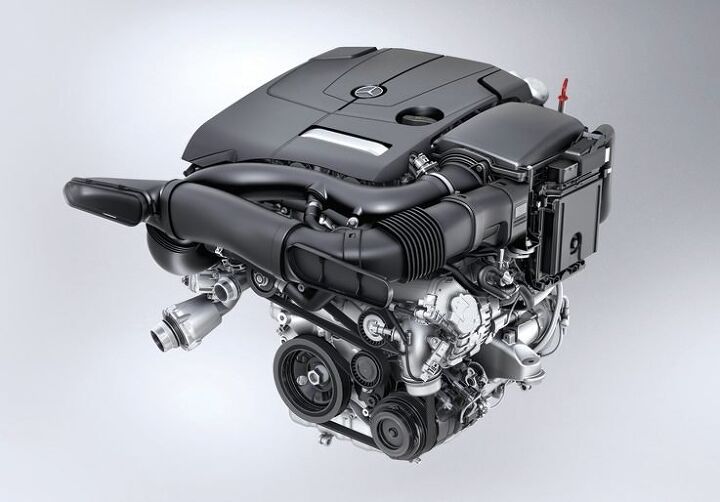








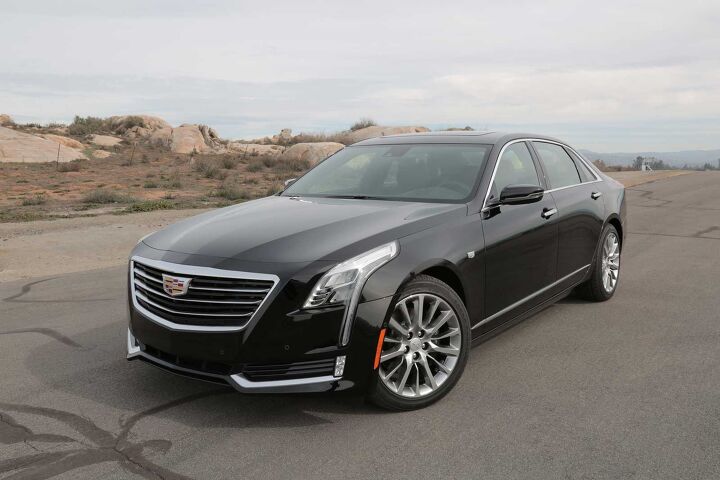









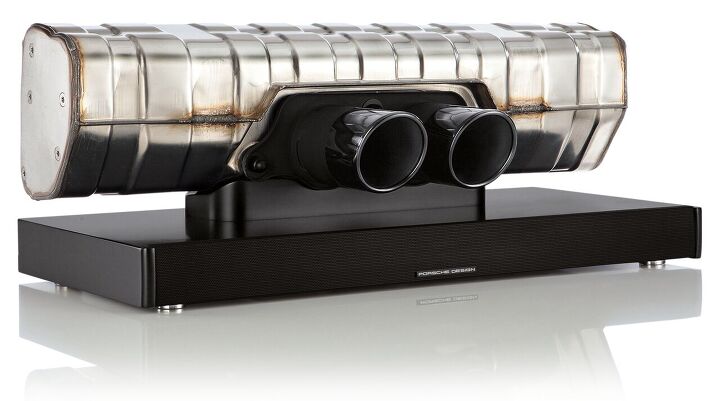




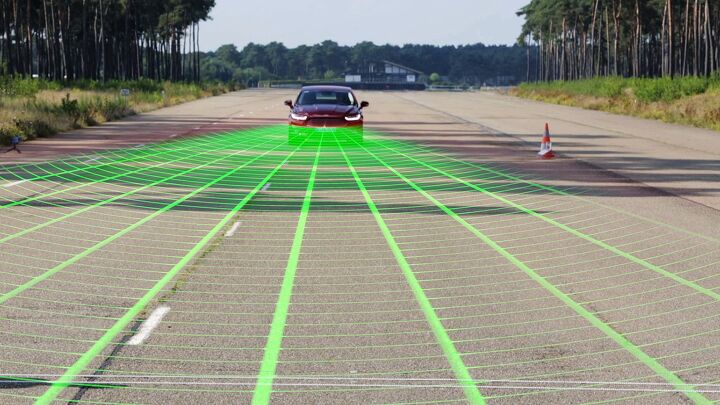
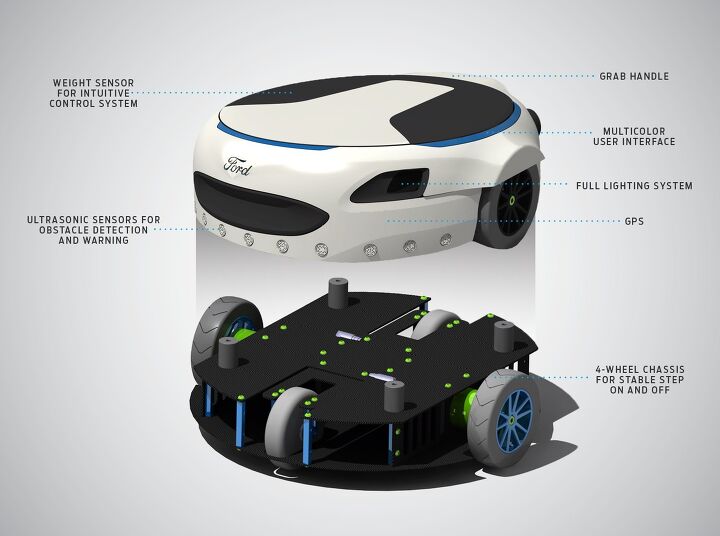
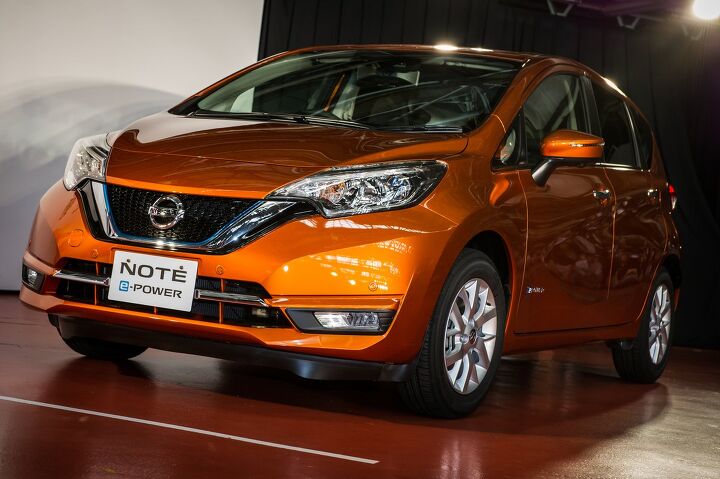
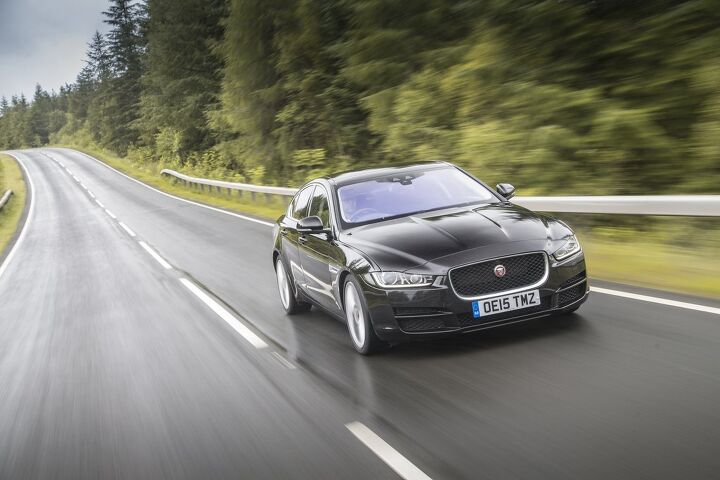


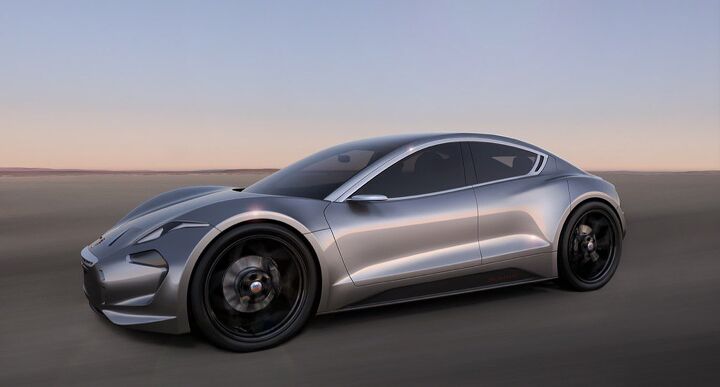
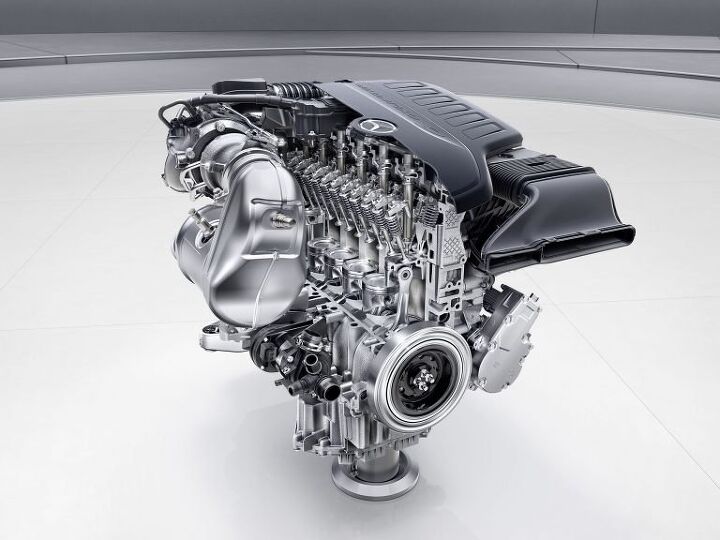
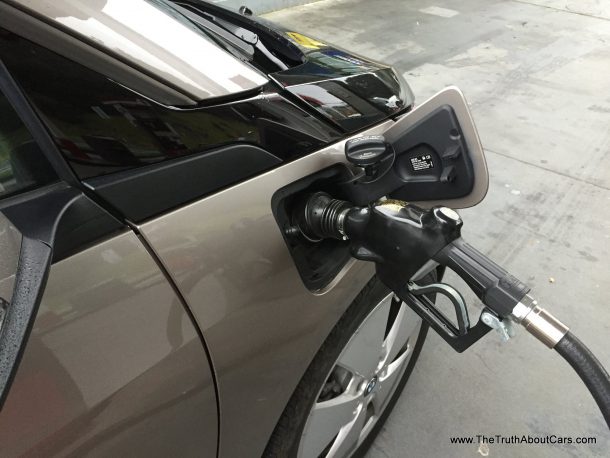






























Recent Comments